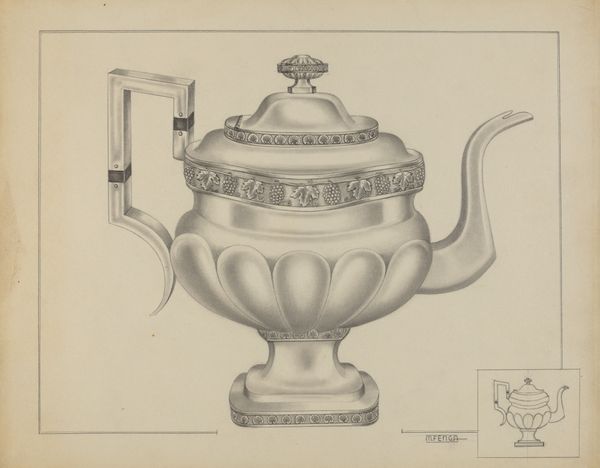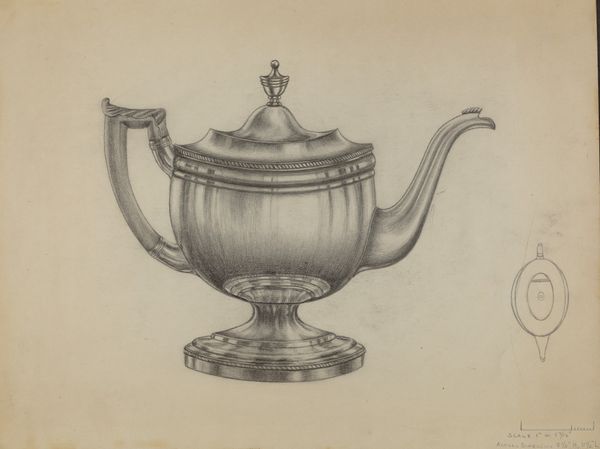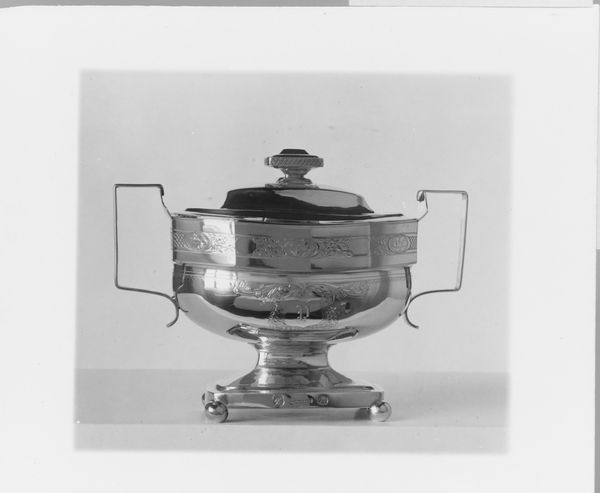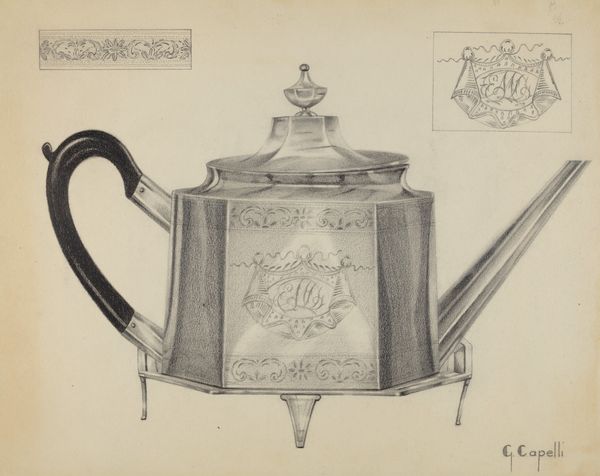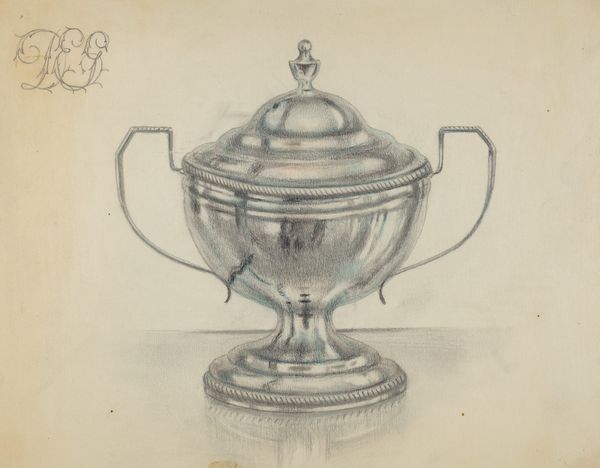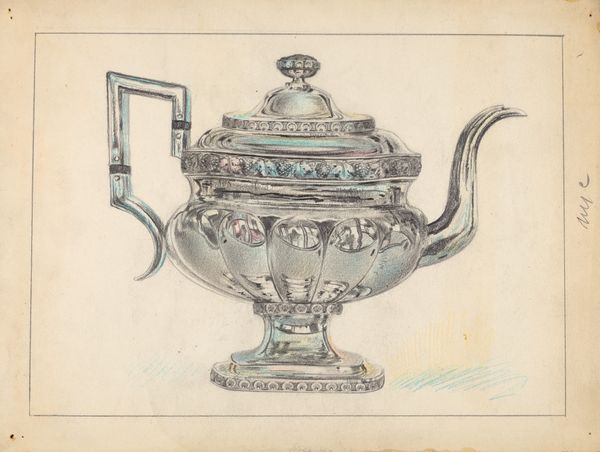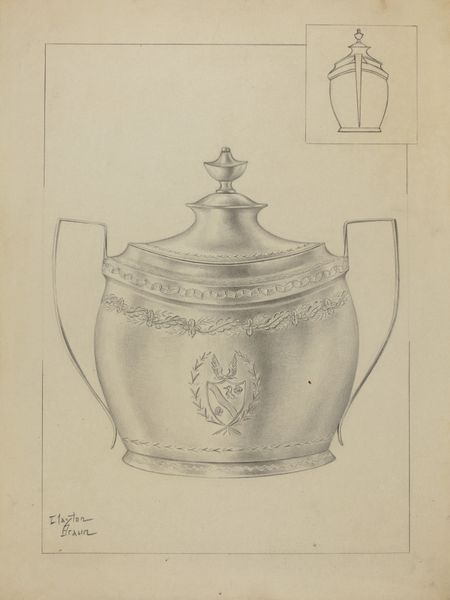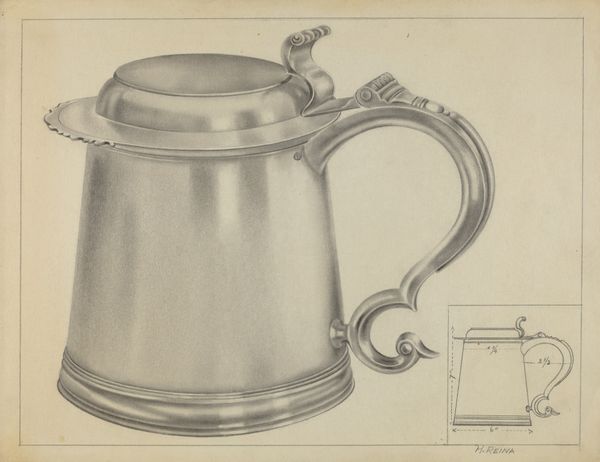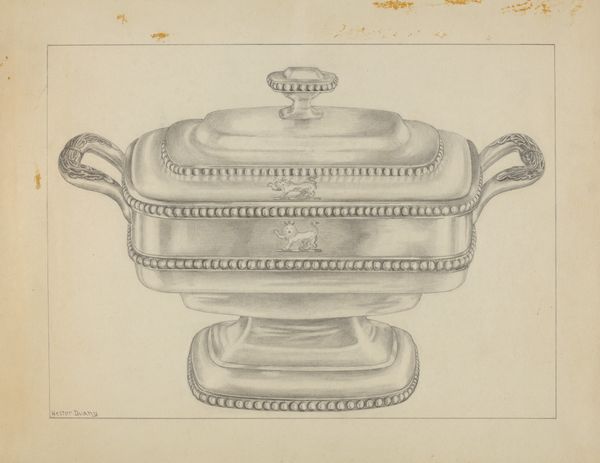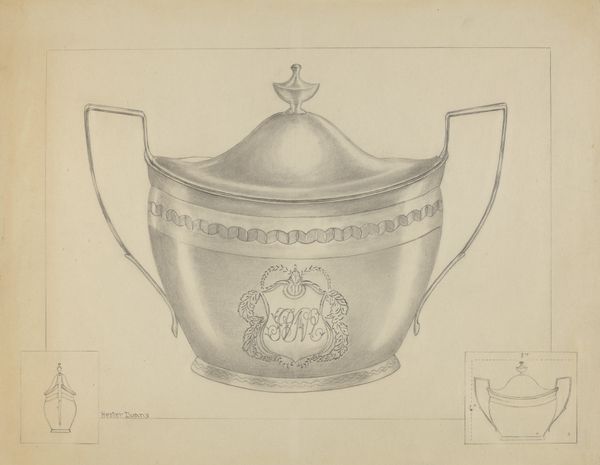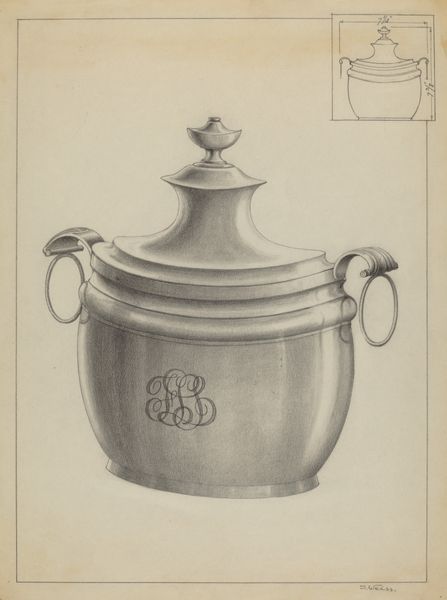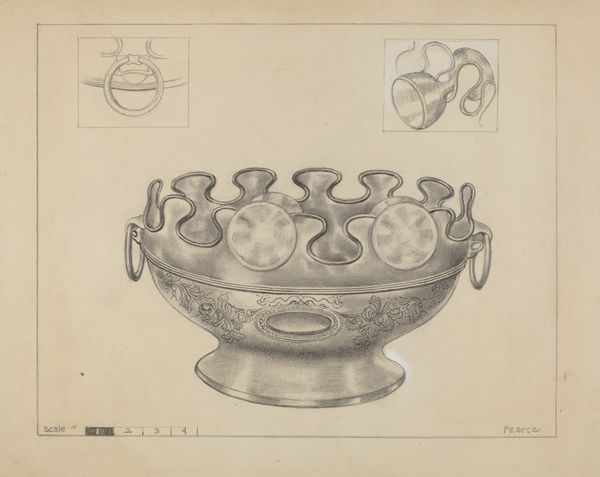
drawing, pencil
#
drawing
#
geometric
#
pencil
#
realism
Dimensions: overall: 22 x 30.5 cm (8 11/16 x 12 in.)
Copyright: National Gallery of Art: CC0 1.0
Editor: So this is "Silver Sugar Bowl," a pencil drawing by S. Brodsky, made sometime between 1935 and 1942. The realism gives it a sense of being from another era. What historical factors do you believe influenced its creation? Curator: Given the period, it's hard not to see it through the lens of economic hardship and social change. Sugar, once a symbol of colonial wealth and exploitation, remained a sought-after commodity even during times of rationing. What does it mean to depict such an object with such care, during those years? Editor: It feels almost subversive. Is it a celebration of attainable beauty or a subtle commentary on wealth inequality during times of shared struggle? Curator: Precisely. The meticulous detail and realism contrast sharply with the social realities of the time. Do you think the artist is simply capturing beauty or is the choice of subject and style itself a statement? Consider who had access to silver sugar bowls during this period. Editor: Good point. Not everyone. So maybe the artist wanted to draw attention to such a disparity. Curator: Or perhaps, it's a reflection on the endurance of certain aesthetics. Look at the geometric shapes and the symmetry. It hints at both stability and traditional roles in the home during that era. Does the artist reproduce or critique them? Editor: It's a really interesting tension. I guess the sugar bowl itself represents a complicated blend of class, commodity, and aspiration. Thank you for highlighting those themes! Curator: It reveals how everyday objects can carry profound cultural and political weight. Appreciating art like this involves looking beyond its surface and engaging with the questions it poses about society.
Comments
No comments
Be the first to comment and join the conversation on the ultimate creative platform.

